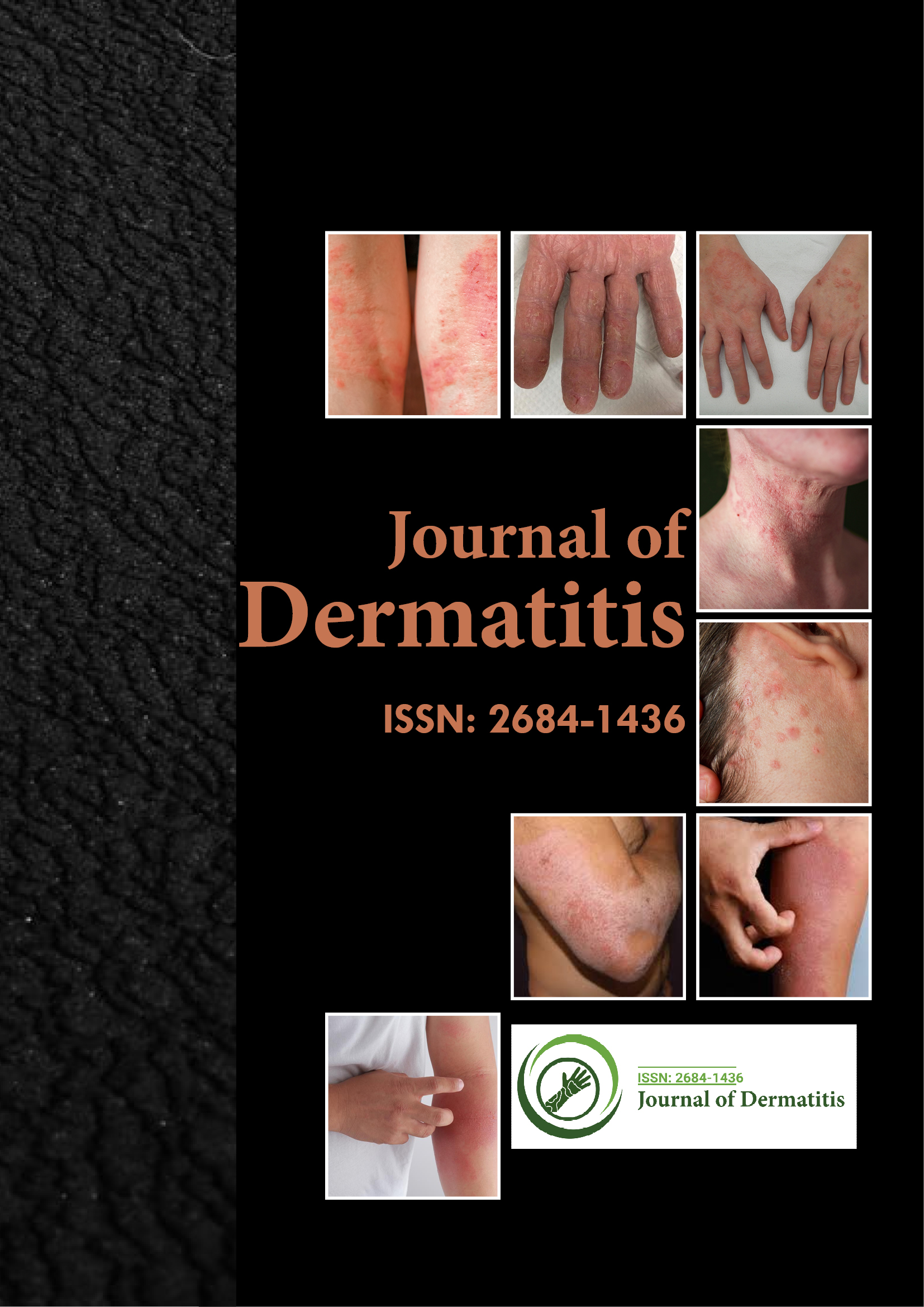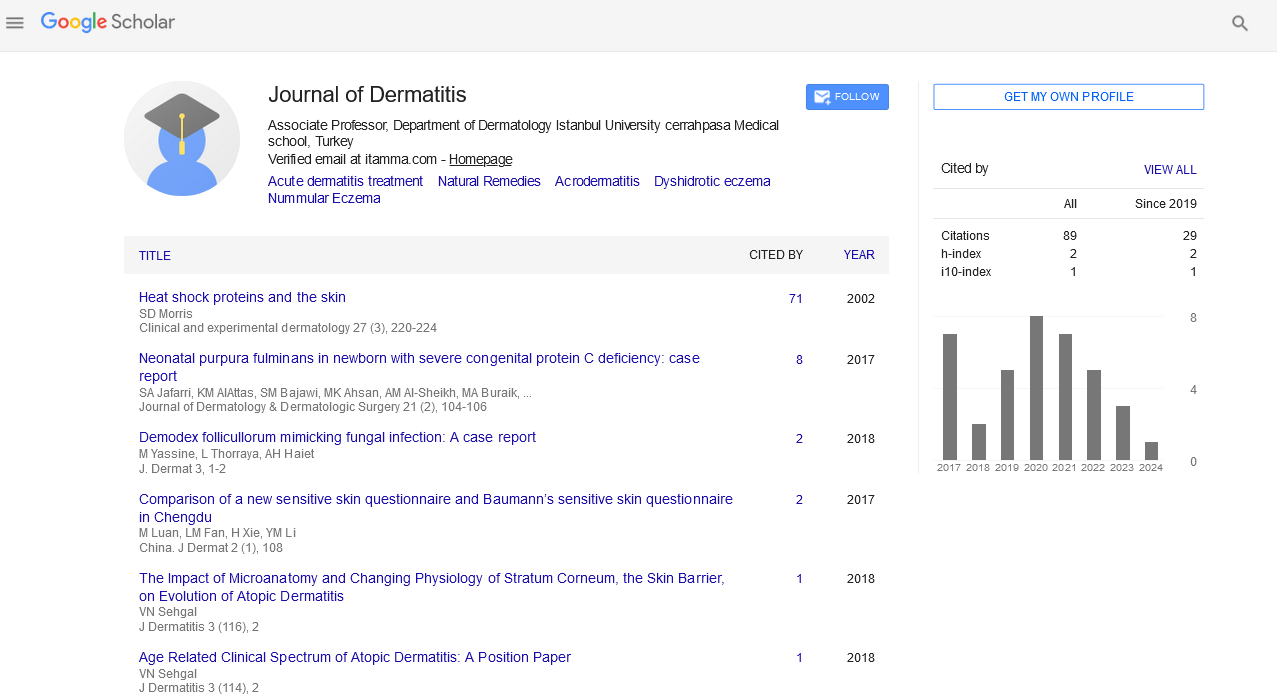Indexed In
- RefSeek
- Hamdard University
- EBSCO A-Z
- Euro Pub
- Google Scholar
Useful Links
Share This Page
Journal Flyer

Open Access Journals
- Agri and Aquaculture
- Biochemistry
- Bioinformatics & Systems Biology
- Business & Management
- Chemistry
- Clinical Sciences
- Engineering
- Food & Nutrition
- General Science
- Genetics & Molecular Biology
- Immunology & Microbiology
- Medical Sciences
- Neuroscience & Psychology
- Nursing & Health Care
- Pharmaceutical Sciences
Perspective - (2025) Volume 10, Issue 1
Efficacy of Non-corticosteroid Options in the Control of Perioral Dermatitis
Jakob Skov*Received: 25-Feb-2025, Manuscript No. JOD-25-29124; Editor assigned: 27-Feb-2025, Pre QC No. JOD-25-29124 (PQ); Reviewed: 13-Mar-2025, QC No. JOD-25-29124; Revised: 20-Mar-2025, Manuscript No. JOD-25-29124 (R); Published: 27-Mar-2025, DOI: 10.35248/2684-1436.25.10.267
Description
Perioral dermatitis predominantly affects women between the ages of 16 and 45, although it may also occur in men and children. It is most commonly seen around the mouth but can also appear around the eyes (periocular dermatitis) and nose (perinasal dermatitis). The rash consists of erythematous papules, small pustules and scaling, frequently with a clear zone around the vermilion border of the lips.
The condition is often mistaken for acne, rosacea, or contact dermatitis, which can delay appropriate treatment. Topical corticosteroid use is a known aggravating factor, and cessation often leads to an initial worsening of symptoms, followed by gradual improvement. The therapeutic approach includes identifying and removing contributing agents, using noncomedogenic skincare and initiating anti-inflammatory treatment. Among topical therapies, metronidazole is commonly used for its anti-inflammatory and antimicrobial effects.
Clinical features and diagnosis
The typical presentation of perioral dermatitis includes clusters of red or flesh-colored papules on a background of erythema, usually sparing the immediate area around the lips. The lesions may be mildly itchy or cause a burning sensation. In some cases, patients report dryness and tightness in the affected area. Diagnosis is primarily clinical and based on visual examination and patient history, particularly the use of topical corticosteroids, fluorinated toothpaste, or cosmetic products. Laboratory tests and biopsies are not usually required unless the diagnosis is uncertain or the condition fails to respond to treatment. Differential diagnoses include acne vulgaris, seborrheic dermatitis, allergic contact dermatitis and rosacea.
Clinical efficacy in perioral dermatitis
Several clinical studies and case series have demonstrated the effectiveness of topical metronidazole in the management of perioral dermatitis. Improvements are typically observed within 2–4 weeks of initiation, with a reduction in redness, papule formation, and overall irritation.
In one open-label study, patients with perioral dermatitis were treated with 0.75% topical metronidazole gel applied twice daily. By the end of 8 weeks, more than 70% of participants experienced significant clinical improvement. Another comparative study showed that metronidazole was as effective as erythromycin gel in reducing lesion count and improving skin texture.
Patients often report good tolerability, with minimal local irritation, dryness, or stinging compared to other topical treatments. Moreover, unlike corticosteroids, metronidazole does not contribute to skin atrophy, making it a safer long-term option.
Systemic absorption is minimal with topical application, making it a safe option even for sensitive populations such as pregnant or breastfeeding women, though consultation with a healthcare provider is advised.
Patients should be monitored for signs of worsening or persistent symptoms, especially if they have used topical corticosteroids recently. In such cases, initial worsening after steroid withdrawal is common and should not be mistaken for treatment failure.
Topical metronidazole represents a reliable and well-tolerated option for the treatment of perioral dermatitis. Its dual antimicrobial and anti-inflammatory properties make it suitable for managing the complex nature of this condition. When combined with supportive skin care and avoidance of exacerbating factors, metronidazole can contribute significantly to symptom relief and aesthetic recovery. As clinical evidence continues to support its use, it remains a preferred choice in the dermatological management of this challenging but treatable condition.
Citation: Skov J (2025). Efficacy of Non-corticosteroid Options in the Control of Perioral Dermatitis. J Dermatitis. 10:267.
Copyright: © 2025 Skov J. This is an open-access article distributed under the terms of the Creative Commons Attribution License, which permits unrestricted use, distribution, and reproduction in any medium, provided the original author and source are credited.

